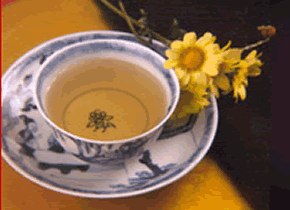Drying Herbs makes them available year round. When herbs are dried, their cell walls break down, which enables the properties of the plants to be released once the herbs are rehydrated.
Dry herbs in the shade in a warm, well-ventilated area and they may be dried on a nylon or stainless steel screen, in a shallow box, or loosely in a paper bag.
Some have found that drying herbs in a paper bag in the backseat of their car to be very affective.
Herbs also can be tied in small bunches and string them up in an attic or warm room to dry.
Most herbs dry in four to seven days. Hen leaves and flowers crumble between fingers, which is a good indication they are dry enough; if they bend and remain flexible, they probably still contain moisture that needs to evaporate.
To test a root for dryness, slice into it in a couple of places; if the root is dry to the touch in its center, it’s ready to be stored.
Storing undried herbs in a glass jar is likely to result in mold growth.
Another method to test for dryness is to seal a sample of the herb in a small, dry glass jar. If droplets of moisture appear on the lid, the herbs moisture is still too high and the drying process must be resumed.
What is drying herbs and why?
Dry herbs in the shade in a warm, well-ventilated area and they may be dried on a nylon or stainless steel screen, in a shallow box, or loosely in a paper bag.
Some have found that drying herbs in a paper bag in the backseat of their car to be very affective.
Herbs also can be tied in small bunches and string them up in an attic or warm room to dry.
Most herbs dry in four to seven days. Hen leaves and flowers crumble between fingers, which is a good indication they are dry enough; if they bend and remain flexible, they probably still contain moisture that needs to evaporate.
To test a root for dryness, slice into it in a couple of places; if the root is dry to the touch in its center, it’s ready to be stored.
Storing undried herbs in a glass jar is likely to result in mold growth.
Another method to test for dryness is to seal a sample of the herb in a small, dry glass jar. If droplets of moisture appear on the lid, the herbs moisture is still too high and the drying process must be resumed.
What is drying herbs and why?












